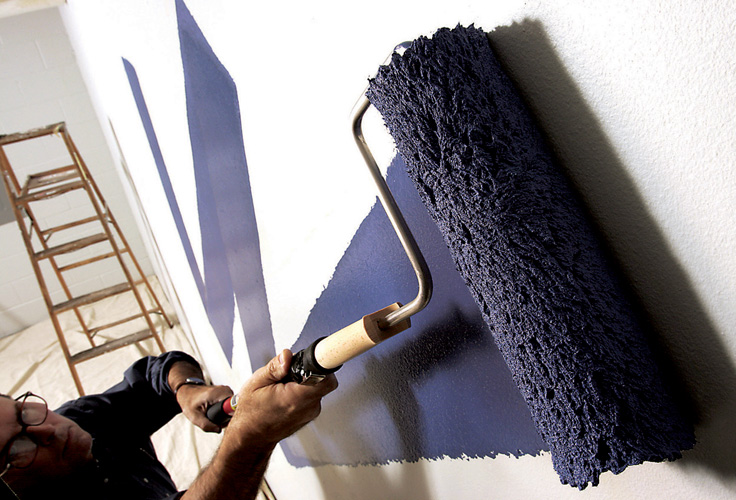Advice from Paint Professionals: How to Select the Proper Brush/Roller for Your Project

|
If you have visited a paint retailer, the choices of brushes, roller covers, faux products and other painting applicators can seem overwhelming. The good news is that paint applicators are designed to specifically match the surfaces you are covering and the materials you are using, so that you can achieve optimum results. Following are some tips to help you match the right tools to your project.
1. What type of painting material will you be using? Will you be using oil-based materials or water-based materials?
If you are using an oil-based paint, natural bristle brushes work best and lay down a smooth coating of paint. Stains, lacquer and varnish also tend to be oil-based products. Check the label of the product you are using to be sure it is oil-based so you choose the right applicator.
If you are using water-based products, brushes with synthetic filaments provide the best results because they will not soak up excess moisture like natural bristles will.
The same concept applies to roller covers. If you are using oil-based products, a natural lambskin cover will work. However, if you are using water-based products, polyester or synthetic blends will work best.
You also need to consider the sheen of the paint. A dull finish will hide surface imperfections, while a satin or eggshell finish may show those imperfections. Use a more substantial brush with the satin or eggshell finish to help smooth over the imperfections.
2. Are you painting interior or exterior surfaces?
"Brushes and roller covers for exterior and interior painting vary greatly," according to Bruce Schneider, the Paint Doctor for Purdy, a manufacturer of professional painting tools.
For interior surfaces, use 100 percent Nylon brushes as you will likely be using latex paint. Consider Purdy Nylox™ brushes for maximum paint distribution and a smooth release.
"For exterior surfaces, you want the bristles to remain stiff so they can withstand the humidity and high temperatures normally associated with painting outside," he notes. In this case, synthetic brushes made with a combination of nylon and polyester bristles, such as Purdy XL™ brushes, are the ideal choice."
When selecting a roller cover for interior jobs, woven fabrics work best. They are less likely to shed into the paint and leave a smooth finish. For kitchens and baths use a low nap roller cover like White Dove roller covers with a 1⁄4" or 3⁄8" nap. For flat wall work, use a 1⁄2" or 3⁄4" nap.
If you are painting an exterior surface, look for a mixture of lambswool and polyester, which can be found in Purdy Roadrunner™ roller covers.
3. What material is the surface made out of?
Are you painting drywall, plaster or wood? For plaster and drywall, many tools will work, you will just need to choose the brush and/or roller cover that matches the texture of the surface.
For highly textured walls or drywall, use a stiff synthetic brush or a roller cover with a large nap (3⁄4" or more) to work the paint into the surface
For bare wood, you'll want a smooth and exquisite finish. A Purdy Syntox™ brush is ideal for all clear topcoat finishes.
If you are still confused about which brush or roller cover to select, Purdy can help. Visit the Web site, www.purdycorp.com and click on the tool selector. Answer a few questions and you will be given a choice of two or three brushes and/or roller covers that will meet your specific needs. If you'd like a Free Painting Tips DVD from Purdy, just go to the Contact Us section and click on the link.







